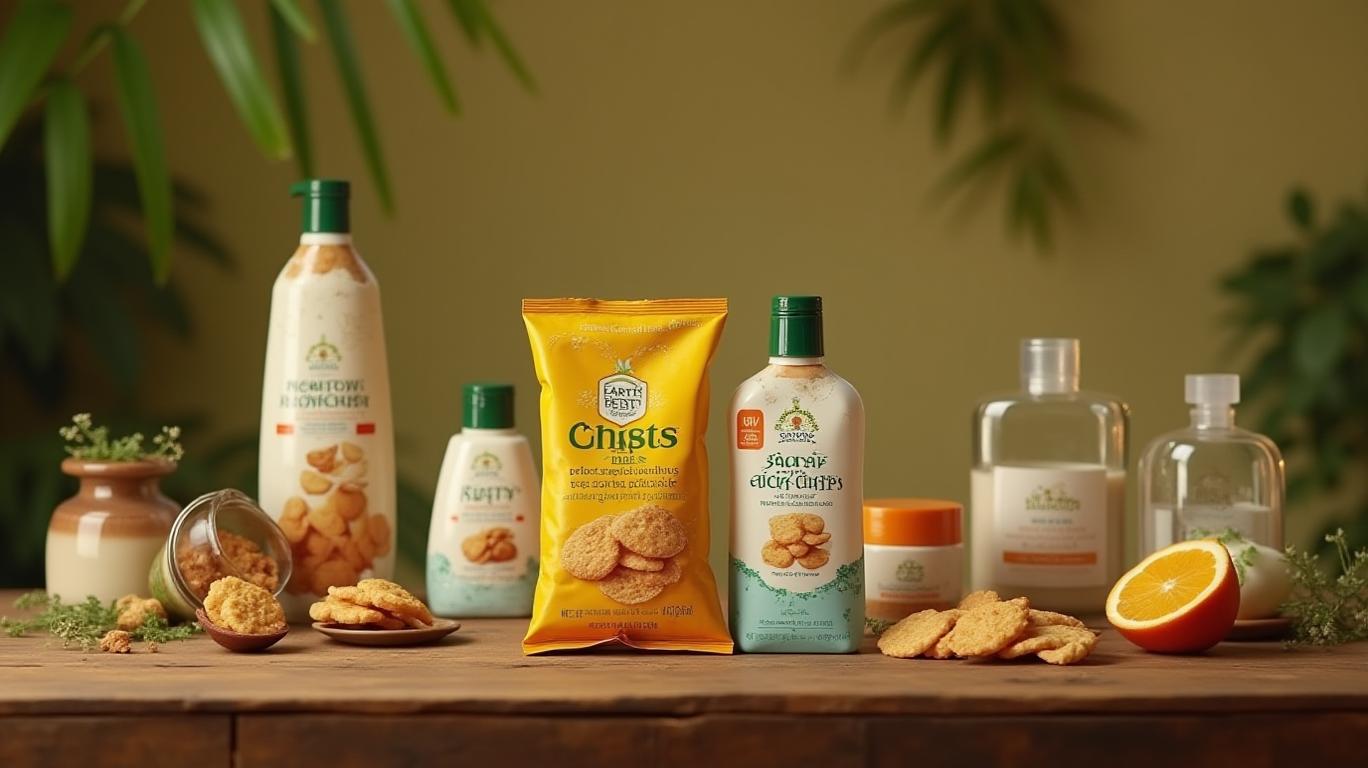Hain Celestial’s Surprising Earnings Slump: A Turning Point or Persistent Struggle?
The Hain Celestial Group’s Q1 2025 earnings report delivered a stark reality check for investors: a net loss of $20 million, nearly doubling its deficit from the prior year, and a 7% year-over-year decline in net sales to $395 million. This underwhelming performance, compounded by missed revenue estimates and a deteriorating stock price, has sparked renewed scrutiny of the natural foods and personal care conglomerate. Analysts now face the critical question: Is this a fleeting setback, or a symptom of deeper structural issues?

The Anatomy of the Earnings Miss
Hain’s struggles are not isolated but stem from a confluence of strategic missteps and external pressures. The 15% reported sales decline in snacks—its largest category—was attributed to a deliberate shift in promotional timing from Q1 to Q3 2025. While this move aims to boost sales later in the fiscal year, it left a noticeable gap in near-term revenue. Meanwhile, the meal prep category, already weakened by shifting consumer preferences, saw further declines, and the divestiture of personal care brands reduced sales by 24% reported.
Geographically, North America bore the brunt of the decline, with sales falling 11% year-over-year. International markets fared slightly better, but only due to modest growth in UK soup brands, which couldn’t offset declines in baby/kids products.
The market has reacted sharply: Hain’s stock has plummeted 55% year-to-date, far outpacing the S&P 500’s 4.7% decline. This underperformance underscores investor skepticism about management’s ability to execute its turnaround strategy.
Analyst Forecasts: Pessimism vs. Pragmatism
Analysts had already lowered expectations before Q1, anticipating a 6.6% revenue decline to $409.4 million. Hain’s actual $14.4 million revenue shortfall deepened concerns. While adjusted EPS matched estimates at $0.04, the stagnation compared to the prior year’s figure signals a lack of meaningful progress.
Zacks Investment Research’s “Sell” rating, based on negative estimate revisions, reflects broader sentiment. The consensus forecast for Q2 2025 now sits at $0.16 EPS on $410.8 million in revenue—a cautious midpoint that assumes no major improvements.
Yet, Hain’s reaffirmed fiscal 2025 guidance offers a glimmer of optimism. Management projects flat-to-positive organic sales growth, mid-single-digit adjusted EBITDA expansion, and a 125-basis-point gross margin improvement. These targets hinge on initiatives such as reigniting snack promotions in Q3, stabilizing infant formula supply chains, and expanding distribution for key brands like Terra® chips and Earth’s Best®.
In contrast to Hain’s decline, peers like Simply Good Foods (SMPL) are thriving, with 15.2% revenue growth in Q1. This divergence highlights Hain’s competitive vulnerability in a market where agility and execution are paramount.
The Road Ahead: Can Hain Turn the Tide?
The company’s path to recovery requires navigating two critical challenges: sales execution and cost discipline.
Sales Rebound: Restoring promotional momentum in snacks and meal prep is non-negotiable. Terra chips, for instance, could capitalize on the growing demand for plant-based snacks if marketing efforts are intensified. Similarly, Earth’s Best’s baby snack growth suggests potential in adjacent categories—if supply chain issues are resolved.
Margin Expansion: The 125-basis-point gross margin target is achievable through cost optimization, including lower freight expenses and better inventory management. However, Hain must avoid sacrificing long-term growth for short-term savings.
Debt Reduction: With net debt at $285 million as of Q1, deleveraging remains a priority. Free cash flow guidance of at least $60 million is a start, but investors will demand sustained improvement to rebuild confidence.
Conclusion: A Stock at a Crossroads
Hain Celestial’s Q1 results underscore its struggle to adapt to a rapidly evolving consumer goods landscape. The stock’s current price of $2.90, nearly half its 52-week high, reflects deep investor disappointment. Yet, the $5.60 average analyst price target suggests that a turnaround could still materialize—if strategic bets pay off.
The numbers tell a mixed story: while Q1’s loss was worse than expected, management’s guidance for flat organic sales growth hints at stabilization. The test will come in Q3, when snack promotions resume and supply chains are repaired. If Hain can deliver sequential sales improvement and margin expansion, its valuation could rebound. However, persistent underperformance against peers like SMPL or Lamb Weston (LW) will keep skepticism alive.
For now, the verdict remains open. Hain’s future hinges on execution—a lesson the market will judge quarter by quarter.

Comments
No comments yet